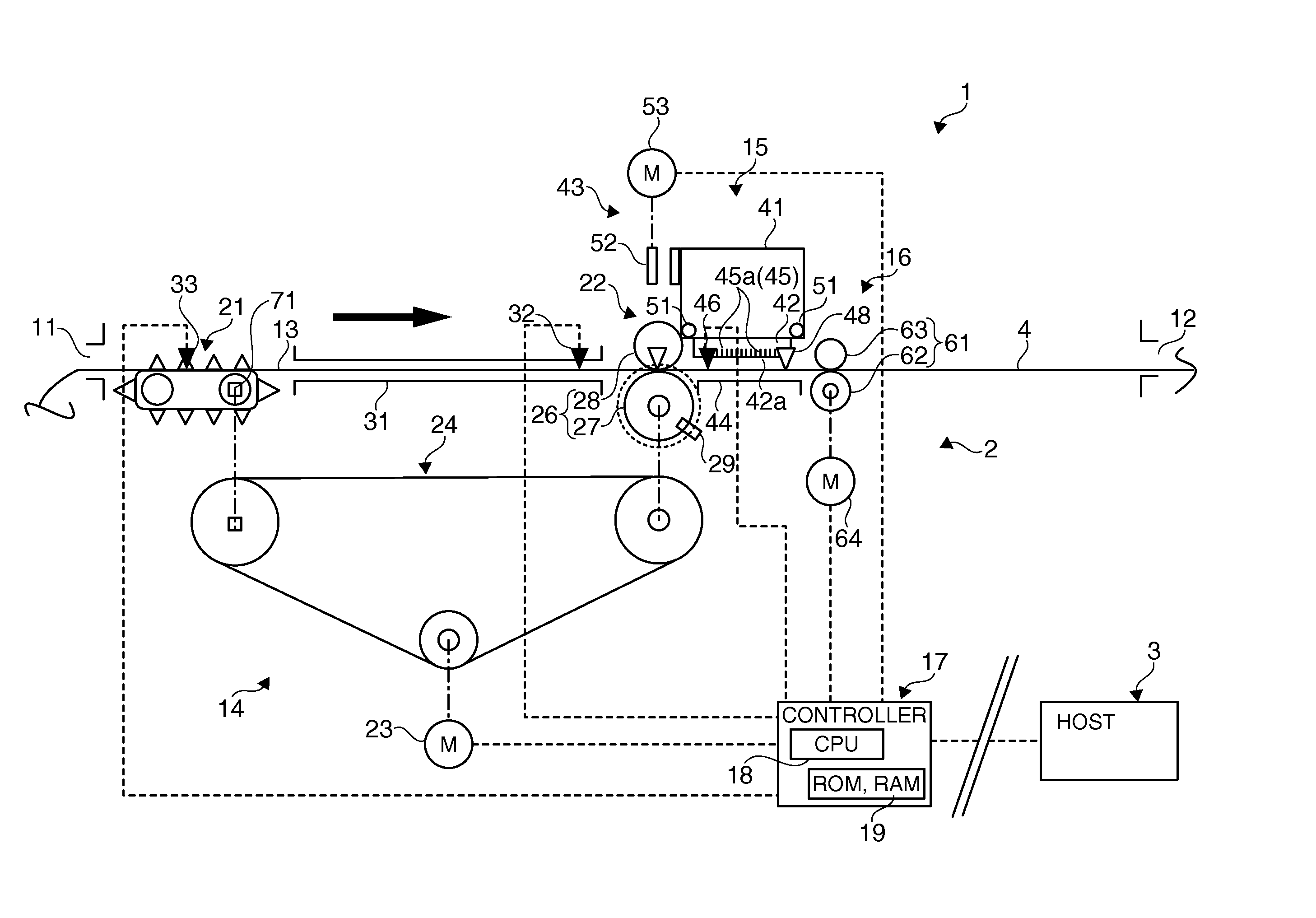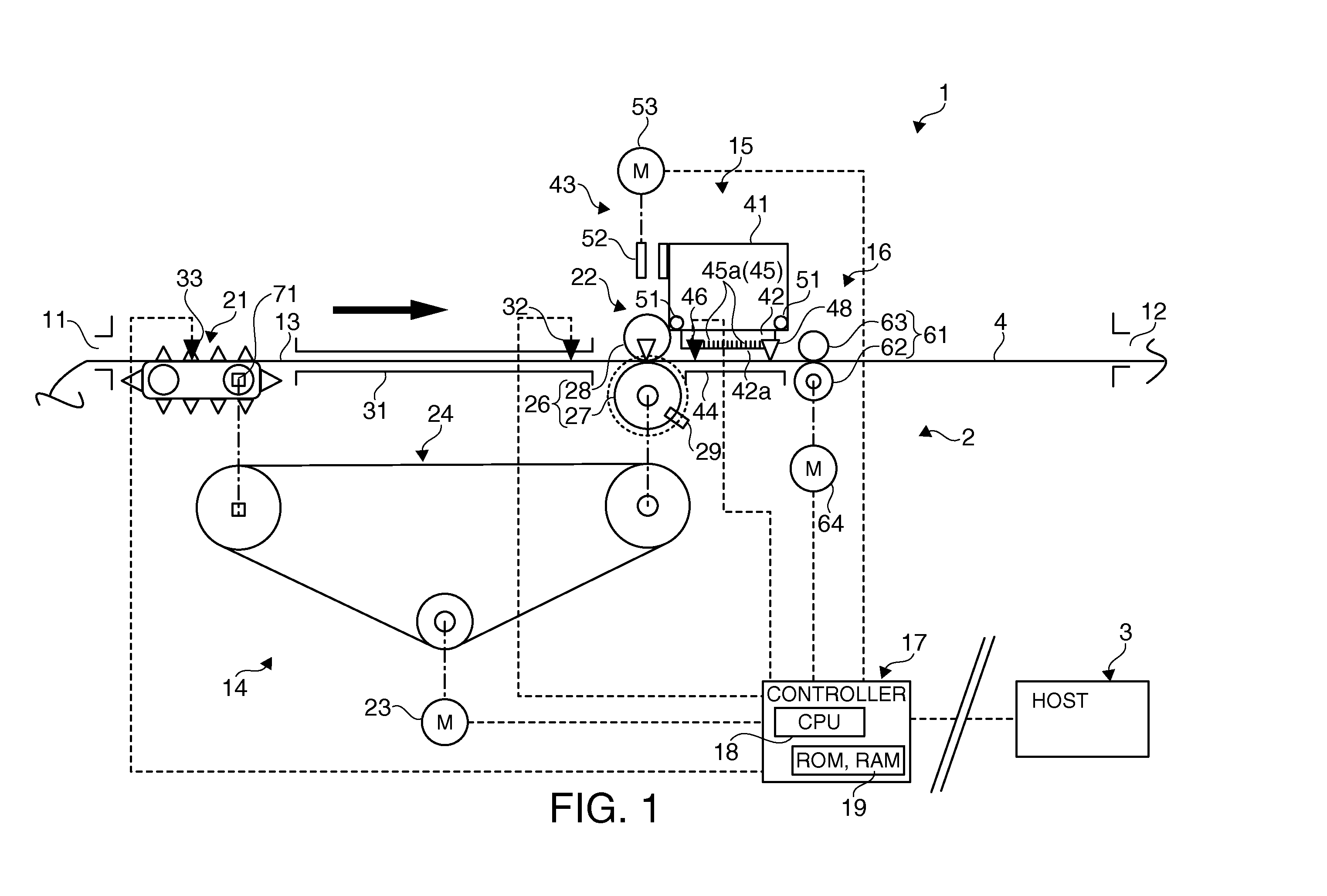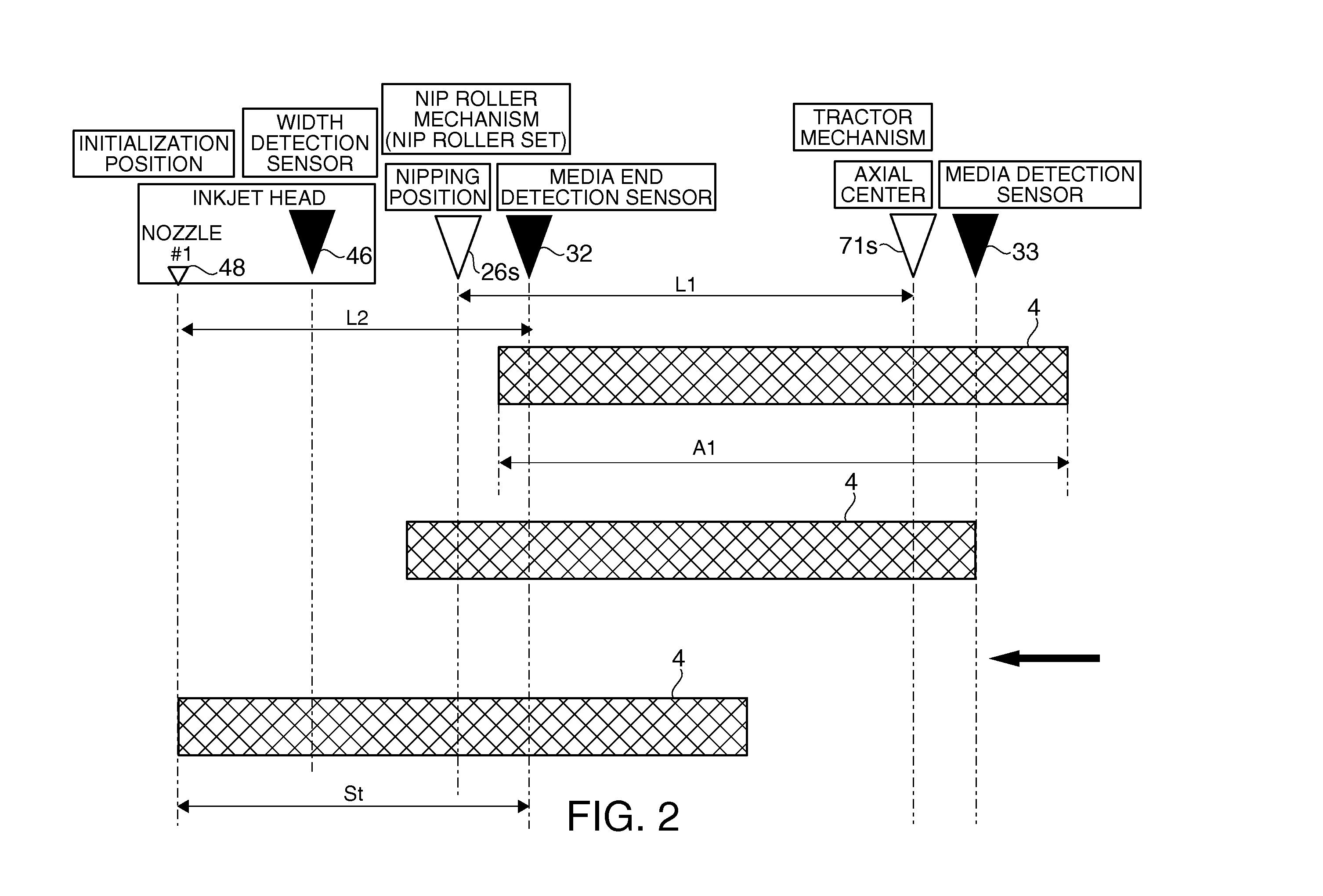Method of controlling a printing device, and a printing device
a printing device and printing technology, applied in printing, other printing devices, etc., can solve the problems of inability to print as desired, inability to detect paper feed errors, and inability to correct media conveyan
- Summary
- Abstract
- Description
- Claims
- Application Information
AI Technical Summary
Benefits of technology
Problems solved by technology
Method used
Image
Examples
second embodiment
[0064]The first control method (FIG. 5A) and second control method (FIG. 5B) of the invention are described next.
first embodiment
[0065]This control method acquires a second reference step count Sa2, which is the number of conveyance steps (second reference conveyance distance) equal to the distance L4 between the media end detection sensor 32 and width detection sensor 46 (second reference distance acquisition unit). As in conveyance control in the first embodiment, this control method is based on the width detection sensor 46 detecting the leading end. The second reference distance acquisition unit is rendered by the controller 17.
[0066]As shown in FIG. 5A, this first control method counts the actual number of steps (second actual conveyance distance) from detection of the leading end by the media end detection sensor 32 until detection of the leading end by the width detection sensor 46 during the time from the start of recording medium 4 conveyance (S-1) until conveyance stops, and saves this count as the second actual conveyance step count Sb2 (S-2, second actual measurement unit). Conveyance of the recor...
PUM
 Login to View More
Login to View More Abstract
Description
Claims
Application Information
 Login to View More
Login to View More - R&D
- Intellectual Property
- Life Sciences
- Materials
- Tech Scout
- Unparalleled Data Quality
- Higher Quality Content
- 60% Fewer Hallucinations
Browse by: Latest US Patents, China's latest patents, Technical Efficacy Thesaurus, Application Domain, Technology Topic, Popular Technical Reports.
© 2025 PatSnap. All rights reserved.Legal|Privacy policy|Modern Slavery Act Transparency Statement|Sitemap|About US| Contact US: help@patsnap.com



